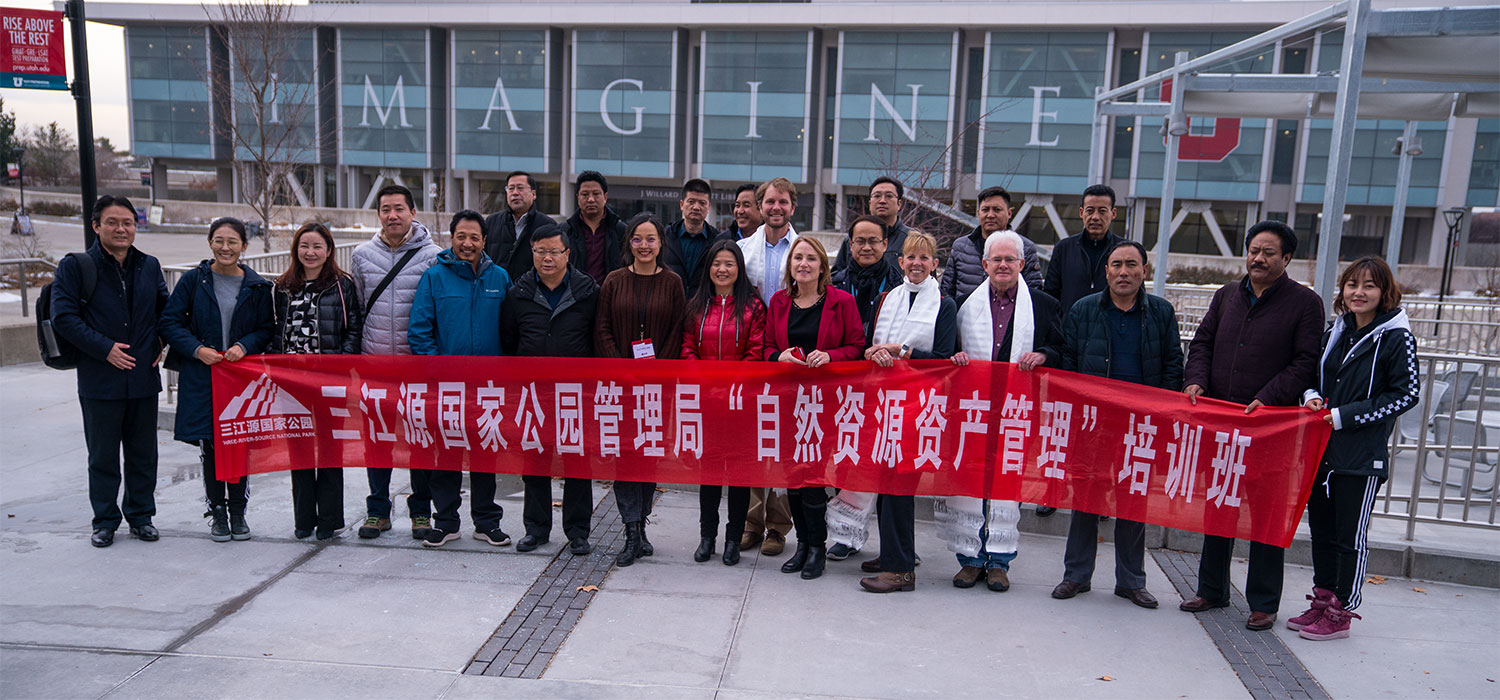By Shawn Wood, communications specialist, University of Utah Communications
In 2017, China’s central government formally introduced a new concept to the country—the creation of national parks. The idea is to set national standards to prevent environmental destruction of natural resources while the country’s population continues to grow. A year later, the Chinese government partnered with the University of Utah’s Office of Global Engagement and Department of Parks, Recreation & Tourism to learn more about Utah’s national parks and public land policies in an effort to build its new program using best practices honed in the United States during the past nearly 150 years.
“China is excited to learn from the long history of national parks in the United States,” said Dingming An, professor at Qinghai Normal University. “We appreciate the opportunity to work with the University of Utah and look forward to developing a customized model that will allow our parks to thrive.”
The Chinese government has proposed 10 new parks, with the possibility of announcing more in the future. Several have been designated to protect endangered species, including the giant panda, Siberian tiger and snow leopard. The first of the Chinese national parks will be in the Qinghai province, a 47,500 square-mile area that contains the headwaters for the Yellow, Yangtze and Lancang (Mekong) rivers, and is the watershed for a billion people. Additionally, the Qinghai park is prime territory for over 60% of the world’s remaining snow leopards.
“China is in an extremely rare position in creating its National Parks System. They have an opportunity to learn from other’s mistakes—to start with a clean slate” said Kelly Bricker, U professor in the Department of Parks, Recreation & Tourism, located in the College of Health. “Those tasked with organizing the new system are looking at the U.S. as a case study and will be able to customize an approach that will work best for China.”
In December 2018 the inaugural team of 20 national parks administrators from Qinghai met with thought leaders and experts from across the university to learn about natural resource management. Over the course of five densely packed days, the Chinese park administrators experienced a multidisciplinary course designed by Bricker. It covered the history of the U.S. system, critical assets, visitor tracking tools and park policies. As part of the pilot course, the group traveled to Zion National Park for three days of practical application and continued instruction.
This is the first of many programming teams that will come to the U to learn about these topics and more. Cheri Daily, director of global programs for the Office of Global Engagement notes that planning is underway for long-term programming to train park administrators from both Qinghai and Sichuan provinces, the sites for the first two national parks coming online in China.
“We’re working closely with our colleagues in China to determine their needs and look forward to a long-term and expanded collaboration,” said Daily. “The desire to preserve natural resources for future generations is a shared value, and one that resonates with Utahns.”
With five national parks and 44 state parks, Utah is committed to public lands and conservation and is a natural choice for this programming. Planning for a second delegation and a formalized multi-year program is underway. A team from the Office for Global Engagement and the Department of Parks, Recreation & Tourism will be traveling to Qinghai in May to formalize the long-term commitment between the U and its partners in China.
Participating campus partners included the Office for Global Engagement, the Department of Parks, Recreation & Tourism and members of the Global Change and Sustainability Center.

